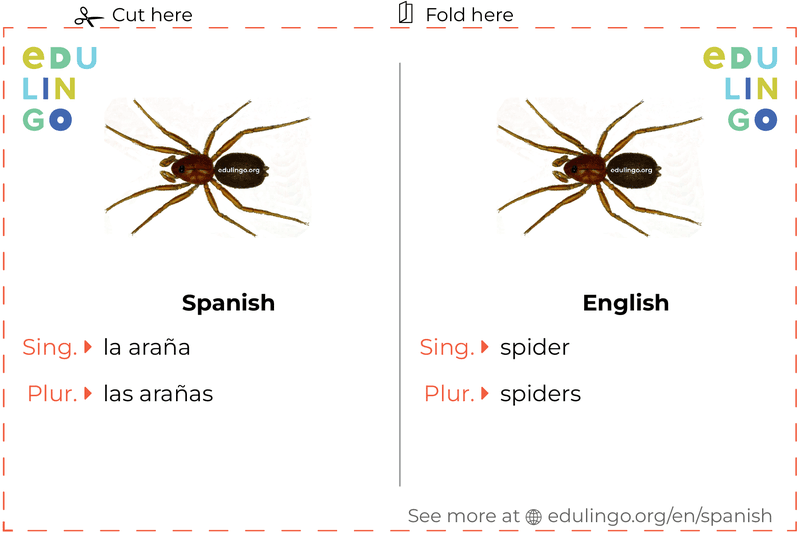Spider net in Spanish, a basic idea in understanding the nuances of the language, opens a captivating window into cultural expression and linguistic variety. This exploration delves into the intricacies of the interpretation, providing insights past easy word-for-word replacements. We’ll unravel the nuances, inspecting the assorted contexts the place this time period could be used, from the literal to the metaphorical.
The varied makes use of of spider net in Spanish mirror the wealthy tapestry of human expertise. From describing the intricate patterns spun by arachnids to conveying ideas of complexity and interconnectedness, the time period embodies a outstanding versatility. This evaluation will unearth the alternative ways during which the Spanish language makes use of this idea, showcasing the depth and breadth of its vocabulary.
Understanding the intricacies of a spider net in Spanish, for instance, “telaraña,” reveals a captivating microcosm of nature’s design. This intricate construction, nonetheless, is dwarfed by the complexities of recent political discourse, notably as explored on platforms just like the channel for political nerds. Finally, the patterns and connections inside the “telaraña” can present a helpful analogy for navigating the often-tangled net of political debate.
The Spanish time period for spider net, telaraña, is greater than only a description of a pure phenomenon. It holds cultural and symbolic weight, showing in literature, folklore, and on a regular basis conversations. This complete information delves into the nuances of telaraña, exploring its linguistic origins, cultural significance, and sensible purposes.
Deciphering the Linguistic Roots of Telaraña: Spider Net In Spanish
The phrase telaraña originates from the Latin phrase tela, which means “net” or “fabric.” This connection underscores the intricate construction of the spider’s creation. The addition of the suffix -araña, stemming from the phrase for “spider” ( araña), supplies context, instantly linking the online to its creator. This linguistic evolution displays the shut remark of nature that has at all times been a part of human language.
Whereas “telaraña” is the widespread Spanish time period for spider net, understanding the nuances of four-letter o phrases like “alone” or “ozone” can surprisingly improve your search engine optimization technique. This understanding of the intricacies in language, just like the connection between spider net in Spanish and different phrases, can unlock insights into how search engines like google and yahoo interpret your content material. A deeper understanding of those delicate connections, just like the hyperlink between “spider net” and “4 letter o phrases” ( four letter o words ), can in the end result in more practical content material creation, thus optimizing your method to net copy.
Past the Bodily: Exploring Cultural Connotations
Past its literal which means, telaraña carries symbolic weight. In varied Spanish-speaking cultures, it typically represents:

- Intricacy and complexity: The intricate patterns of a telaraña mirror the complexity of life and relationships.
- Hidden risks or traps: The online may also symbolize hidden risks or traps, a delicate metaphor for all times’s challenges.
- Persistence and remark: In some contexts, telaraña symbolizes the necessity for persistence and cautious remark, as spiders patiently wait for his or her prey.
- Nature’s artistry: In different instances, the sweetness and artistry of a telaraña symbolize nature’s intricate designs.
Telaraña in Literature and Folklore
The presence of telaraña in literature and folklore is important. Authors have used it to create evocative imagery, typically linking it to themes of thriller, solitude, and even decay. [See also: Exploring Metaphors in Spanish Literature]. For instance, a poem may use telaraña to represent the passage of time, whereas a folktale may characteristic it as a harbinger of misfortune.
Whereas “araña” is the usual Spanish translation for “spider,” understanding the nuances of spider webs in several Spanish-speaking cultures could be fascinating. As an example, exploring the idea of a “pillow princess,” a time period utilized in sure on-line communities, might supply perception into the cultural symbolism typically related to spider webs. What is a pillow princess mean ?
Finally, the imagery of spider webs in Spanish continues to be wealthy with cultural and metaphorical which means.
These examples exhibit the wealthy tapestry of cultural meanings woven into this seemingly easy phrase.
Sensible Purposes and Scientific Concerns
Whereas primarily a linguistic and cultural idea, telaraña additionally has sensible purposes. In sure scientific contexts, the construction of the spider net is studied for its outstanding power and design effectivity. The examine of telaraña is a captivating exploration of organic engineering. [See also: How Spider Webs Inspire Innovative Technologies]
Variations and Associated Phrases
Whereas telaraña is the most typical time period, there are regional variations and associated phrases that could be used to explain a spider net. [Image: Map highlighting regional variations in spider web terminology]. These variations, whereas delicate, mirror the various linguistic landscapes throughout Spanish-speaking areas.
Whereas “araña” is the widespread Spanish time period for spider, understanding the nuances of spider webs in several Spanish-speaking cultures could be attention-grabbing. Realizing methods to remedy a small hand drums crossword, just like the one discovered here , might unlock a deeper appreciation for the intricate patterns of a spider net. Finally, Spanish vocabulary for spider webs, like “telaraña,” is fascinating to discover.
Conclusion: Unveiling the Layers of Telaraña
The Spanish phrase telaraña transcends a easy description of a spider’s net. It embodies a wealthy tapestry of linguistic origins, cultural connotations, and sensible purposes. By exploring the intricacies of this seemingly easy phrase, we achieve a deeper appreciation for the nuances of the Spanish language and the various methods during which cultures understand and work together with the pure world.
Need to discover extra associated matters? Learn our articles on [See also: Spanish Idioms and Expressions] and [See also: Cultural Significance of Animals in Spanish Folklore].

Depart your feedback or questions beneath! Share this text on social media to assist others uncover the fascinating world of telaraña!
In conclusion, exploring the multifaceted world of “spider net” in Spanish reveals a charming interaction of literal which means and cultural connotations. This exploration, whereas targeted on a single time period, highlights the richness and complexity of the Spanish language. The insights gained supply a deeper understanding of how language displays and shapes our worldview. Additional investigation into comparable linguistic phenomena guarantees to disclose extra concerning the interconnectedness of language and tradition.
Whereas “telaraña” is the widespread Spanish phrase for spider net, exploring different Spanish vocabulary could be fascinating. As an example, delving into 9-letter phrases beginning with “w” can supply a recent perspective on language. 9 letter words that start with w showcasing the vastness of language potentialities, and in the end enriching our understanding of the intricate world of spider webs in Spanish and past.
Q&A
What are some widespread errors individuals make when translating “spider net” into Spanish?
Some widespread errors contain utilizing a literal translation that does not seize the meant context. For instance, a direct translation may not convey the metaphorical which means if the “spider net” represents a fancy community. Cautious consideration of the particular scenario is vital to an correct translation.
How does the context affect the interpretation of “spider net” in Spanish?
The context dictates the suitable translation. If discussing a literal spider net, the interpretation will differ from utilizing it metaphorically to explain a fancy net of relationships or a tangled drawback. Understanding the meant which means is essential for correct communication.
Are there regional variations in how “spider net” is translated or utilized in Spanish-speaking international locations?
Whereas the core translation is constant, nuances in regional dialects and colloquialisms may affect the particular time period used. Additional analysis into particular regional contexts can supply a extra nuanced understanding.
